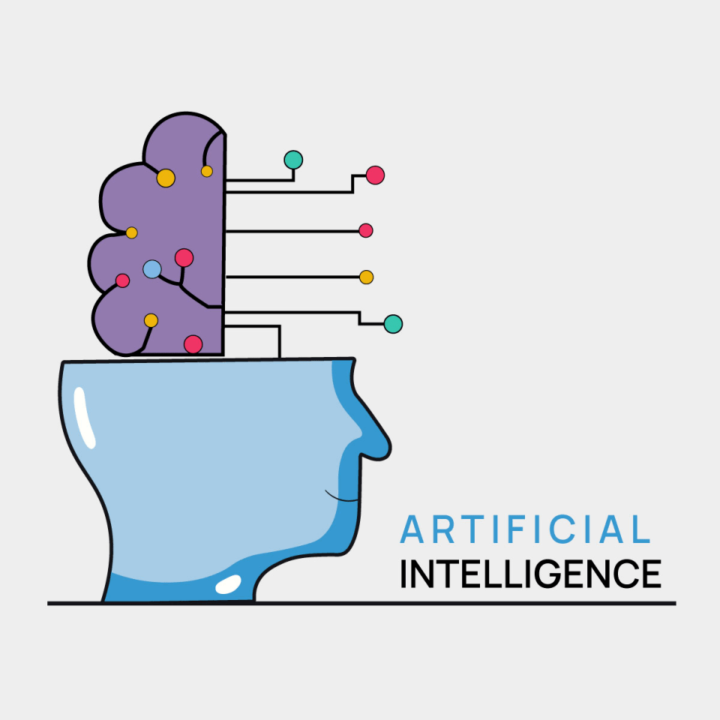For many open roles out there, it’s a candidate’s market. Especially in highly-skilled, in-demand roles, quality employees often have their pick of places to work. This makes the role of the recruiter even more vital. Recruiters are often the business’s first impression. They’re the first to introduce many potential clients to your company culture and help them understand why it’s a good place to work. But the recruiting process is not always easy for candidates to follow.
Recruiters — along with some of the latest technology — can help smooth that process out and make it a better, more efficient experience for the applicants, as well as hiring managers so your new hires can go from an open position to onboard and work at full capacity as quickly as possible. The world of recruiting is shifting, but with a little work, you can stay up-to-date on the latest recruiting trends.
For many job seekers, the first touchpoint with an organization is the recruiter. To make that first impression the best possible experience for applicants, the role of the recruiter has become even more valued. Demand for recruiting professionals grew 63% from 2016-2019, and the fastest-growing skills for recruiters are related to decision-making and HR strategy.
What are the trends in recruitment for 2021? Like many other parts of the business, recruitment is digitizing and building processes to meet the demands of today’s labor market and environment. Here are a few examples of how recruitment is shifting to meet changing demand.
1) Virtual Recruiting

Some 70% of the companies say their recruiting and onboarding is at least half virtual – with 1 in 10 reporting that it is fully virtual. Virtual recruiting will continue to grow, as will the challenges it presents in affording candidates a close-up look at company culture and sustained in-person interaction for both the candidate and the company to determine fit. Top-notch virtual recruiting experiences aim to convey company culture from the first moments a candidate discovers an open role with the organization.
Recruiters play a pivotal role in human capital management (HCM) — or the practices and strategy your business uses to recruit, train and retain your workforce. HCM is a framework that aligns your workforce to your business needs. Virtual recruiting is playing a more significant role in HCM strategies, especially paired with remote working. No longer is your business limited to finding candidates in the geographic area of your offices or headquarters. Instead, you can think beyond geographic boundaries and recruit the best candidate for a position, no matter where he or she lives.
One example of virtual recruiting playing a strong role in HCM is accounting firm PwC, which rolled out a mobile-enabled “choose your own adventure” experience that gives the job seeker more control over the hiring experience. This includes the ability to self-schedule interview times and choose an interviewer, as well as real-time visibility for candidates to see where they are in the process. Interviews are increasingly being conducted virtually, and candidates are being asked how they work effectively in virtual environments.
2) Remote Work

At least a hybrid of in-person and remote work is here to stay. This year will further loosen geography boundaries on hiring pools – with more than 1/3 of companies saying they are willing to hire remote workers from anywhere in the world.
Some 60% of applicants want flexibility in when they work and where they work. The ability to choose remote work technology and equipment (such as standing desks or noise-canceling headphones), along with providing collaboration technologies and ways to learn and connect remotely will distinguish companies for job seekers. Candidates may even begin to set themselves apart with remote work certifications – such as the course offered through North Dakota State University, a one-month class designed to equip workers with the tools and skills needed to work from home.
Companies such as Ring Central are building entirely virtual teams from the very earliest talent stages. In 2020, the collaboration platform vendor shifted its entire internship program to virtual – including a supporting summit, as well as a project to come up with a concept feature for their products.
3) Automation

Candidate relationship management and applicant tracking, which is often managed using human resources management systems (HRMS), along with digital interviewing platforms are radically altering the role of recruiters because many formerly manual processes are being automated. HRMS improves the employee experience — and in terms of recruiting it can help with resume management, scheduling interviews, and tracking the process for candidates, recruiters, and hiring managers.
By using HRMS tools to save time at the earliest stages of the process, recruiters can ease one of the points that introduce the most friction in the candidate experience – the length of the recruiting process itself. In 2021, recruiters will automate more traditionally in-person (or on-the-phone) tasks, such as candidate screenings and initial interviews. One area experiencing huge growth in this regard is asynchronous video technology – software that allows applicants to film themselves answering a set of questions.
Video technology helps companies speed up the applicant-to-hire process – often on a massive scale. For instance, Walmart’s “Project 24” – which has a goal of getting from a job opening to a job acceptance within 24 hours – has aimed to ease the process of setting up in-person interviews, messaging back and forth, and scheduling and rescheduling. A pre-employment assessment and a phone interview replaced that process. The combination of efforts has driven down the time to identify a hire to make an offer from 14.5 days to 3.5 days.
4) Artificial intelligence

AI technology is used to source candidates, review resumes, and schedule interviews. Some platforms leverage AI to comb through answers to written interview questions – learning from the data and using algorithms to push the candidates forward that are the best fit. Recruiters are pretty bullish on AI — some 36% of recruiters say AI would make their jobs better. They reported using AI for job recommendations on career sites, candidate matching, job description recommendations, candidate screening with automated messages, and candidate engagement scoring.
One of the areas in which AI holds particular promise is in removing bias from job descriptions. AI-powered writing tools can replace language that may be biased or gendered in job descriptions. Leveraging these tools, Deloitte says one consumer goods company saw a 30% increase in the number of qualified applicants, while another tech company saw the job descriptions attract 28% more women and fill the positions 50% faster.
5) Chatbots

Chatbots used in the recruiting process are helping to convert more applicants and increase the number of candidate leads. Chatbots are valuable, for instance, in giving candidates the opportunity to learn more about the organization before even applying – and subsequently reducing time spent answering those types of questions by a human recruiter. Career sites with chatbots compared to those without chatbots had 95% more conversion to leads, 40% more job seekers complete applications and 13% more job seekers click on a job requisition.
Common topics candidates ask chatbots about include how to apply, the status of applications, benefits and compensation, and questions about searching for specific roles. Marriott International was one of the first hospitality companies to deploy recruitment chatbots. These AI-powered chatbots guide users to open roles and even serve up relevant content to educate them on the positions.
6) Predictive Analytics

Part of the role of the recruiter is to help attract, identify and convert the best quality candidates to boost productivity at your company. And you can make highly educated guesses for who will be the best for any particular role. But predictive analytics puts data behind those decisions and helps you make even more informed estimates. It uses historic and current data to make predictions about the future. In HR, predictive analytics takes data from your HRMS, resumes, job descriptions, and other areas to predict outcomes about applicants.
Some of the areas it might track would include the cultural fit, their likelihood to remain with the company, their ability to learn new skills, and their ability to become and stay engaged. A single job posting at JP Morgan can attract thousands of applicants. The company uses machine learning algorithms to help sort those resumes and use them as a tool to aid recruiters as they comb through the stacks of applicants.
Machine learning tries to identify what types of applicants are more likely to be interviewed and hired and find trends in what types of applicants are likely to stay on, especially in high turnover roles. While computers aren’t making the hiring decisions, their recommendations are serving as important tools for recruiters.
7) Social Recruiting

Recruiting with LinkedIn is old news by this point. But recruiters are broadening their scope and working on Facebook, Twitter, Instagram, and more to find high-quality candidates and try to appeal and market to them via social media. Some 78% of recruiters expect that recruiting activities will increase on social media platforms outside of LinkedIn this year.
And while phone and email remain the most effective recruiting tools, social recruiting is predictably making major gains among younger generations. Instagram continues to rise in use as a platform for recruiting – growing from 18% in 2017 to 37% of recruiters using it today.
Companies like Verizon, for instance, are leveraging Instagram in creative ways to engage people for tough-to-find roles, such as developers and engineers. The telecom giant, as an example, presented its Instagram audience with a difficult-to-solve puzzle and the tagline, “Think you can crack this code? If so apply to be a #Verizon #Software #Developer today.”
8) Webinars

The absence of job fairs in 2020 and into 2021 will cut off a channel especially effective in recruiting early talent, as well as talent needed for geographic expansions. Compared to Instagram, webinars may look a little old hat but will continue to prove especially effective in recruiting talent by creating brand awareness and bringing the right people into the recruitment pipeline.
Companies will use webinars in a way that drives recognition and positive associations with the business. For instance, the International Atomic Energy Agency hosted a webinar for women interested in careers in the nuclear field. The speakers shared information about their current projects and provided advice on career paths.
9) Recruitment Trend FAQs
What are the trends in recruitment?
As companies adapt to monumental shifts in remote working, recruiters are focusing on adaptability and ways to improve processes with things like artificial intelligence, machine learning, and human capital management software.
What is the future of recruitment?
As technology advances, many of the formally manual processes, such as scheduling, data entry, and even resume reviews, will be automated. This frees up time for recruiters to become even more focused on strategic activities, such as managing your brand as an employer and marketing to highly skilled workers for hard-to-fill roles.
What is the next big thing on the horizon for recruiting?
Recruiting is fast becoming more technical. Data analysis and digital marketing skills are growing in demand, while somewhat in juxtaposition, a renewed emphasis on human empathy is also growing. Candidates want smooth and transparent hiring processes and want to get a glimpse at the culture of your company. But at the same time, they don’t want to be treated like a number, and the human side of recruiting is more vital than ever.
How do you recruit in 2021?
Treat your recruitment like you might a marketing campaign. Consider breaking down your recruitment funnel or pipeline into awareness, interest, decision, and action stages. Understand that just because someone isn’t the right fit for a particular role right now, that doesn’t mean she won’t be a valuable addition to the team later on. Treat all applicants with respect and build applicant pools.
Follow Author@

| Name | Senorita Joyce |
| About Her | Author | Keynote Speaker | Social Activist |
| LinkedIn Handle | https://www.linkedin.com/in/senoritalobo/ |
StartoCure is the online entrepreneurial magazine platform, where the team brings you Interview & Stories of Entrepreneurs, Inspirations, Influencers, Startups eco-system & Change-makers. StaroCure also committed to bringing resources, research reports, funding reports, and analysis of the startups, as well as profiles of great businesses & entrepreneurs from all over the world.





